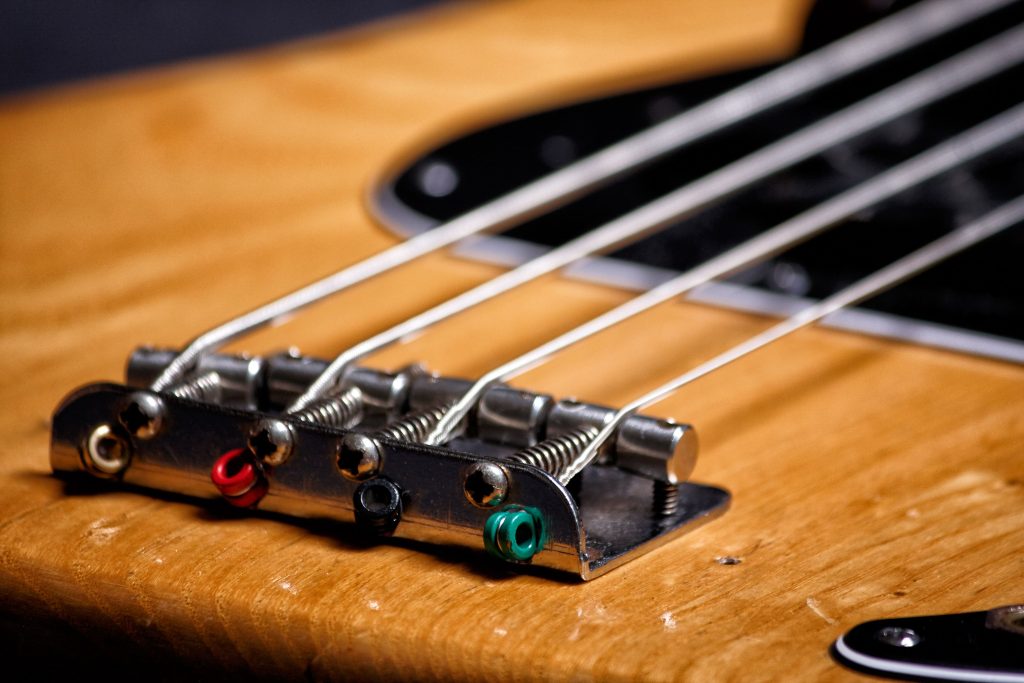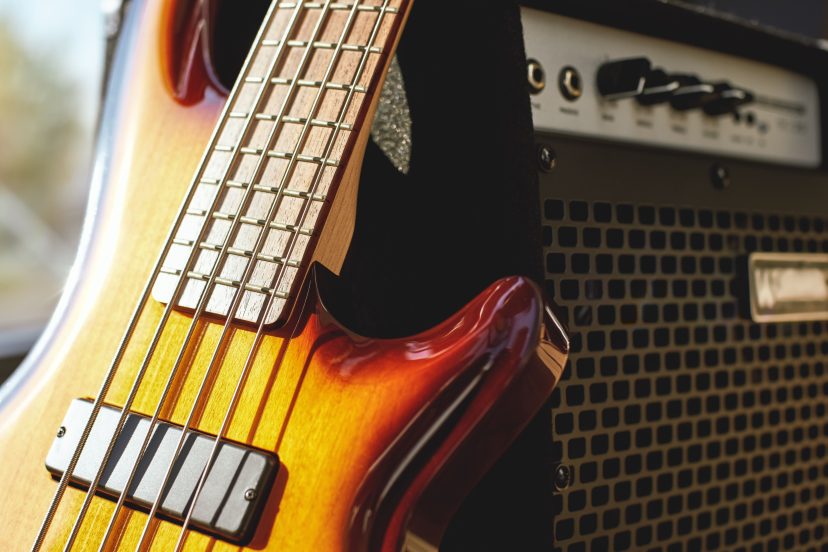Bass Guitar Tone: Deep, Warm and Bright
Bass Guitar Tone Customization
Customizing the bass guitar tone is a journey of discovery and fine-tuning, where every adjustment shapes your unique sound. From choosing the right strings to dialing in effects and amp settings, crafting the perfect bass tone requires a balance of knowledge, patience, and a dash of experimentation. Whether you’re drawn to a thick, smooth low-end or a crisp, mid-focused punch, this guide covers every step to make your bass tone distinctively yours.
Bass guitar tone customization is all about sculpting a sound that resonates with you and fits your musical style. While some may settle for the default settings, going beyond basics opens up possibilities that can transform your music. So, what defines a great bass tone? It’s the sound that fits naturally within the music and makes your bass feel like an extension of your creativity. Let’s dive into each component to discover how to shape the tone that feels right.
Why Tone Matters in Bass Guitar
A bassist’s tone is more than the sound they produce—it’s a statement of style and personality. Each band member contributes to the overall sound, but as the bassist, your tone is the foundation. The way you sound can bring warmth, grit, clarity, or darkness, impacting the way listeners feel the music. If you’re ready to take your tone into your own hands, think of it as creating a signature sound. Consider your style, the genres you play, and the mood you want to set. Some bassists prefer a smooth, mellow tone that complements jazz, while others might lean toward a bright, edgy sound that’s perfect for rock and funk. The key is knowing your sound and the impact it brings to your music.
Knowing Your Genre and Style
Different genres call for different tone qualities. Jazz often favors a warm, round sound that blends smoothly, while rock and metal gravitate toward a more aggressive, high-energy tone. Funk bass relies heavily on a clear, punchy midrange, while Motown demands a smoother, almost flat tone. Matching your tone to the genre isn’t a rule but rather a guide to find the voice that best suits your music.
Key Components of Bass Tone Customization
Several components impact your bass tone, including strings, pickups, pedals, amplifiers, and EQ settings. By understanding how each of these influences sound, you’ll gain more control over your tone and can customize it to suit your preferences.
Strings and Their Impact on Tone
The type of strings you use can have a dramatic effect on your tone. Strings vary in type, gauge, and material, each providing different tonal qualities. Whether you want a bright, energetic sound or a more muted, smooth tone, your strings can be the easiest way to start shaping your sound.
Roundwound vs. Flatwound
Roundwound strings are known for their brightness and versatility. They deliver a lively sound that works well in rock and funk, giving you more definition and punch. Flatwound strings, on the other hand, produce a warmer, darker tone and are ideal for jazz, blues, and Motown. They provide a smoother feel under your fingers, which some bassists prefer for their “vintage” character.
Pickups and Electronics
Pickups capture the sound of your strings and translate it into an electric signal, so it’s no surprise they play a huge role in shaping your tone. The choice between active and passive pickups will determine your tonal flexibility, and each type offers unique benefits.
Active vs. Passive Pickups
Active pickups provide higher output and allow for more tonal shaping directly on your bass, thanks to onboard EQ controls. This makes them ideal for players who perform across various styles, as they can adjust their tone on the fly. Passive pickups have a warmer, organic sound and don’t require a battery. Many bassists find passive pickups more “authentic,” especially for genres like jazz and blues.
Effects Pedals for Tone Shaping
Effects pedals are a playground for tone experimentation, allowing you to add textures and layers to your sound. From adding depth with reverb to creating gritty distortion, each pedal can unlock new tonal possibilities.
Distortion, Overdrive, and Fuzz**
Distortion, overdrive, and fuzz pedals add varying levels of grit to your sound. Overdrive is the mildest of the three, providing a warmer tone that’s great for blues and rock. Distortion pedals add more grit and sustain, giving a more aggressive sound suitable for rock and metal. Fuzz pedals go even further, creating a rich, buzzing sound that stands out.
Chorus, Delay, and Reverb
Modulation and ambient effects like chorus, delay, and reverb bring depth and dimension to your tone. Chorus thickens your sound, making it fuller. Delay creates an echo effect, adding rhythm and layering to your tone. Reverb gives your sound a sense of space, making it feel bigger and more atmospheric.

Amplifiers and Their Influence on Tone**
Amplifiers are essential for projecting your sound, but they also shape it significantly. Tube and solid-state amplifiers each offer different characteristics, and choosing between them is key to refining your tone.—
Tube vs. Solid-State Amps
Tube amps are beloved for their warm, “vintage” tone that adds richness to your sound. They’re more responsive to dynamics, so subtle changes in your playing can be heard clearly. Solid-state amps, however, are known for their reliability and clarity, making them popular for live performance. They’re generally lighter and can produce a clean tone even at high volumes, making them ideal for bassists who want a consistent, clear sound. However, todays Solid-state amps are capable of producing the warm tone that once were only avaiable by the vernable tube monsters.
Adjusting EQ Settings
EQ controls allow you to adjust the frequencies of your sound, letting you emphasize or reduce certain tonal qualities. Understanding EQ is crucial for crafting your sound. The low frequencies provide the foundation of your sound, adding depth and power. Boosting the lows can give your tone a fuller, more robust quality. The mids are where much of the bass tone’s character lies, with higher mids giving more punch and clarity. High frequencies add definition and can make your sound crisper, though too much high-end may sound overly sharp.
Practical Tips for Tone Experimentation
Experimenting with your tone isn’t just about following a guide, it’s about exploring what sounds good to you. Here are some practical tips for tone experimentation. Begin with your amp and EQ settings at neutral and no effects engaged. Play with each element individually to hear how it impacts your tone. This clean slate approach helps you build your tone one step at a time. Tone customization can be overwhelming, so focus on adjusting one element at a time. If you’re changing your strings, keep your pickups and effects the same to fully appreciate the change in sound.
Developing Your Signature Bass Tone
Creating a signature bass tone is all about consistency and personalization. Find what works, refine it, and make it your own. Here are some steps to guide you. Keeping track of your settings is invaluable when you’re experimenting. Documenting adjustments allows you to replicate your tone, even if you change instruments or setups. Sometimes, fresh ears can catch something you missed. Getting feedback from bandmates or fellow musicians can help you refine your tone and bring out the best qualities in your sound.
Conclusion
Customizing your bass guitar tone is a rewarding and personal journey. It’s an art form in itself, blending your musical identity with technical know-how. By experimenting with each aspect of your tone—from strings and pickups to amps and EQ—you can craft a sound that’s uniquely yours. Embrace the process, and remember, there’s no perfect tone—only the one that feels right for you.
FAQs
Can I change my bass tone without new gear?
Absolutely! You can start with EQ adjustments and small changes to get a fresh sound.
Are effects pedals necessary for a good bass tone?
Not at all! A strong bass tone often starts with your instrument and amp settings; pedals are simply enhancers.
How often should I change my strings?
This depends on your playing frequency, but every 3-6 months is ideal for keeping your tone fresh.
Do I need both active and passive basses for versatility for bass guitar tone?
Not necessarily; both types have great tonal range, and either can be used for versatile play.
Should I record myself to evaluate my tone?
Recording lets you assess your sound in context, making it a great way to refine your tone further.




